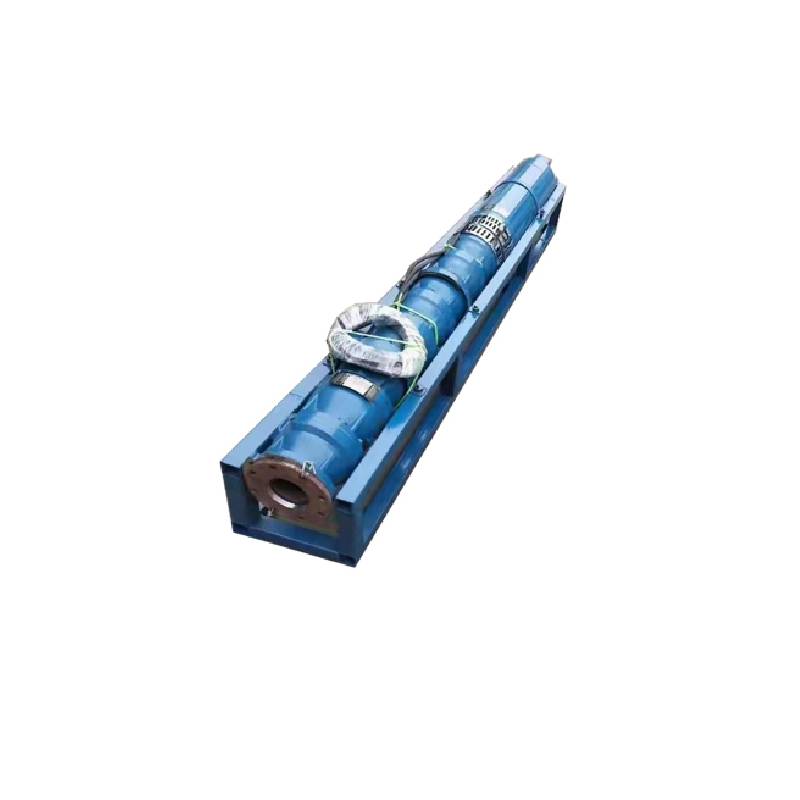Nov . 11, 2024 01:28 Back to list
Cost Analysis for Installing Submersible Pumps in Various Applications
Submersible Pump Installation Cost Factors and Considerations
When it comes to managing water supply and drainage systems, submersible pumps play a crucial role in a variety of applications. Whether for residential, agricultural, or industrial use, these pumps operate underwater to move water efficiently. However, the installation of a submersible pump can vary significantly in cost, influenced by several essential factors. This article will explore these factors, providing insight into what can affect installation expenses.
1. Type of Submersible Pump
The type of submersible pump you choose heavily influences the installation cost. Submersible pumps come in various designs and specifications tailored for different tasks, such as sewage handling, deep well pumping, or general water drainage. Each type has its unique features, which can increase or decrease the cost. For instance, a high-capacity pump for a commercial application may be more expensive compared to a smaller unit designed for residential use. Thus, understanding your specific needs will help you select a pump that fits your budget and application.
2. Depth of Installation
The depth at which a submersible pump must be installed is another critical factor determining installation costs. Deeper installations typically require more complex setups, which can escalate labor costs. For example, installing a pump in a deep well may necessitate additional equipment and expertise to reach the necessary depth, significantly adding to the overall expense. Additionally, more extensive trenching or excavation work might be required if the location has complex geological features, pushing costs higher.
3. Site Conditions
The installation site’s conditions can also impact the cost of submersible pump installation. Factors such as soil type, existing infrastructure, and accessibility can complicate the installation process. For example, rocky or sandy soil may require specialized drilling equipment, while a lack of access for heavy machinery may lead to increased labor costs. Similarly, if utilities or other structures need to be relocated or protected during installation, this could further inflate costs.
4. Pump Accessories and Equipment
submersible pump installation cost

Additional equipment and accessories are often necessary for effective submersible pump installation. This can include control panels, float switches, check valves, and piping systems. Costs vary depending on the specific requirements of the installation and the quality of the materials chosen. High-quality accessories may have a higher upfront cost, but they can also provide better reliability and performance in the long term.
5. Labor Costs
Labor costs are a significant component of any pump installation project. The complexity of the installation will influence the number of hours needed for installation, thus affecting labor costs. Hiring experienced professionals may incur higher hourly rates, but it often leads to a more reliable and efficient installation. It’s essential to weigh the costs against the potential risks of subpar work, which could lead to troubleshooting and maintenance expenses down the line.
6. Permits and Regulations
Before installing a submersible pump, it’s crucial to consider local regulations and requirements. Some jurisdictions may mandate permits for such installations, which can add another layer of costs. Compliance with environmental specifications, especially for pumps affecting groundwater or wastewater systems, may require additional investments in permits or inspections.
7. Maintenance and Longevity
While not directly a part of the installation cost, anticipating future maintenance and the lifespan of the equipment is vital. A higher upfront cost may be justified if the pump is of superior quality, promising lower maintenance expenses and greater longevity.
Conclusion
In summary, the installation cost of submersible pumps can vary dramatically based on numerous factors, including the type of pump chosen, installation depth, site conditions, required accessories, labor, and regulatory compliance. By carefully assessing these elements, individuals and businesses can make informed decisions that align cost with functionality and ensure a successful installation that meets their water handling needs. Investing properly now can save time, money, and stress in the future, as an effective submersible pump can provide reliable service for many years.
-
Submersible Water Pump: The Efficient 'Power Pioneer' of the Underwater World
NewsJul.01,2025
-
Submersible Pond Pump: The Hidden Guardian of Water Landscape Ecology
NewsJul.01,2025
-
Stainless Well Pump: A Reliable and Durable Pumping Main Force
NewsJul.01,2025
-
Stainless Steel Submersible Pump: An Efficient and Versatile Tool for Underwater Operations
NewsJul.01,2025
-
Deep Well Submersible Pump: An Efficient 'Sucker' of Groundwater Sources
NewsJul.01,2025
-
Deep Water Well Pump: An Efficient 'Sucker' of Groundwater Sources
NewsJul.01,2025
-
 Submersible Water Pump: The Efficient 'Power Pioneer' of the Underwater WorldIn the field of hydraulic equipment, the Submersible Water Pump has become the core equipment for underwater operations and water resource transportation due to its unique design and excellent performance.Detail
Submersible Water Pump: The Efficient 'Power Pioneer' of the Underwater WorldIn the field of hydraulic equipment, the Submersible Water Pump has become the core equipment for underwater operations and water resource transportation due to its unique design and excellent performance.Detail -
 Submersible Pond Pump: The Hidden Guardian of Water Landscape EcologyIn courtyard landscapes, ecological ponds, and even small-scale water conservancy projects, there is a silent yet indispensable equipment - the Submersible Pond Pump.Detail
Submersible Pond Pump: The Hidden Guardian of Water Landscape EcologyIn courtyard landscapes, ecological ponds, and even small-scale water conservancy projects, there is a silent yet indispensable equipment - the Submersible Pond Pump.Detail -
 Stainless Well Pump: A Reliable and Durable Pumping Main ForceIn the field of water resource transportation, Stainless Well Pump has become the core equipment for various pumping scenarios with its excellent performance and reliable quality.Detail
Stainless Well Pump: A Reliable and Durable Pumping Main ForceIn the field of water resource transportation, Stainless Well Pump has become the core equipment for various pumping scenarios with its excellent performance and reliable quality.Detail
